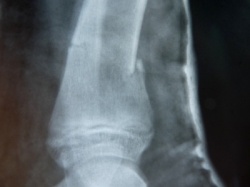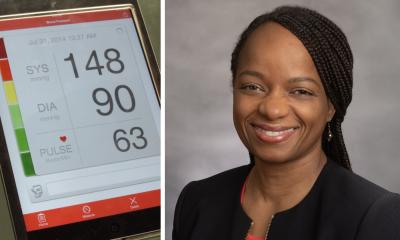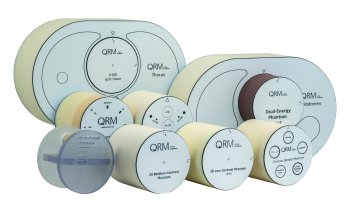Brittle bones and heart disease go hand in hand
Norwegian studies indicate that people with osteoporosis have a greater risk of developing cardiovascular disease, and vice versa. Now researchers believe they have found a biological system that may influence both disease processes.

Today over 400 000 Norwegians have some form of cardiovascular disease, according to figures from the Norwegian Society of Public Health. These diseases are the most frequent cause of death of both men and women in Norway.
Osteoporosis is another common, widespread disease. One-half of all Norwegian women and one-fourth of all Norwegian men will experience at least one bone fracture after they have turned 50. Now it appears that in some cases the same mechanism is at work in both disease processes, making us more vulnerable to osteoporosis and heart attack and stroke.
Greater risk of stroke
Osteoporosis is a disease in which a reduction of the mineral content of the bones results in low bone density. In 2001, Professor Lone Jørgensen and her colleagues at the University of Tromsø published a study showing that women who had suffered a stroke had much lower bone density than other women of the same age.
“This finding piqued our interest in looking for potential connections between osteoporosis and atherosclerosis (‘hardening of the arteries’). Atherosclerosis is a disease in which fatty material, calcium and connective tissue collect along the walls of arteries. It is a common cause of stroke and other cardiovascular diseases,” Dr Jørgensen explains.
The researchers carried out a project to study some of the possible connections between osteoporosis and the risk of developing cardiovascular disease using data from about 6 000 men and women who participated in a special survey in 1994-1995 and 2001-2002, which was part of the comprehensive Tromsø study of cardiovascular diseases. The project ran from 2006 to 2009, and was funded by the Research Council’s allocations earmarked for women’s health research.
A possible connection found
“It appears there is a connection between low bone density and the type of atherosclerotic changes that are rich in connective tissue and calcium. Women who exhibit these changes also have a higher risk of bone fracture,” Dr Jørgensen says.
In many cases, a person may develop osteoporosis and suffer a heart attack for completely different reasons. But there may be a causal relationship between the diseases. Data from several research groups now indicate that a biological system involving osteoprotegerin (OPG), among other things, may be a common denominator.
“We have found that bone loss is linked to a high level of OPG in post-menopausal women. In addition, we see that a high level of OPG also predicts the development of atherosclerosis in women,” she continues.
Prevention
The researchers want to learn more about the role played by the system of which OPG is a part.
“Our contribution will be to find out as much as possible about the connections between these One-half of all Norwegian women and one-fourth of all Norwegian men will experience at least one bone fracture after they have turned 50.diseases in the population in general and the factors that influence them. We hope that our findings will help to develop methods of preventing these serious diseases,” Dr Jørgensen concludes.
Picture: pixelio/Dieter Schütz
02.12.2010










